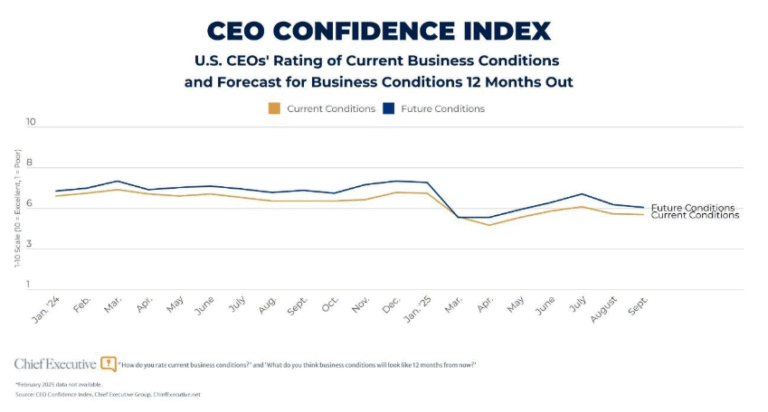
The ongoing bull market obscures huge challenges for many companies. At any point, about a third of large U.S. firms endure a severe, two-year decline in their ability to create shareholder value. And of those companies, about a third fail to recover within the following five years, according to new research by The Boston Consulting Group (BCG).
To stay ahead of the curve, companies must fundamentally transform themselves in ways that dramatically and sustainably improve performance. And they must do this over and over, according to a new report from BCG, The Transformations That Work—and Why. In this era of always-on transformation, most companies need to undergo transformation at least once during any five-year window, the report says.
On the basis of its experience with more than 750 transformations across industries and regional markets, and by applying statistical analysis, BCG has identified several indicators of transformation success. A company whose transformation effort includes three crucial features—strategic investments in R&D; a well-communicated, formal transformation plan; and the appointment of action-oriented leaders who have a disruptive mindset—can increase long-term shareholder returns by almost 14 percentage points, according to the report.
Many companies aren’t doing enough to get ready for the future. For example, while profit margins are up 21% since 2010, investment in R&D has been flat and capital expenditures almost even. Bumper profits and low reinvestment harmonize badly with the level of disruption.
“CEOs and leaders need to show compelling plans, take immediate action, and lay the groundwork for leading with a clear vision and solid objectives.”
The report explains the indicators that lead to success in company transformation—that is, success in increasing long-term company value:
Spending on R&D and Innovation with a Long-Term Focus on Revenue Creation. In the long-term, revenue growth is the biggest factor in transformation success. But a company can’t cut and trim its way to top-quartile performance. Instead, it should aim to grow by spending on innovation that has a clear link to sales growth.
Taking a Formal Approach to Transformation—and Communicating It. CEOs and leaders need to show compelling plans, take immediate action, and lay the groundwork for leading with a clear vision and solid objectives. This kind of bold action and clear communication can help establish credibility with investors and other stakeholders.
Appointing Action-Oriented Leaders Who Have a Disruptive Mindset. To transform a company, the CEO and senior leaders must be willing to change the business dramatically. Often, new CEOs—particularly if they come from outside the company—increase the long-term odds of a successful transformation. On average, after five years, companies that hired new CEOs externally generated total shareholder returns (TSR) 12.9% higher than they achieved before the transformation. The corresponding TSR figure for companies with new CEOs hired internally was 8.4%, according to the report. The caveat is that returns from new external CEOs show greater variability, meaning that when they fail, they fail worse than insiders do. Incumbent and insider-selected CEOs must not underestimate the disruption necessary for transformation.
Taking Rapid Action Toward Transformation Goals. Instead of trying to reinvent the company all at once, leaders should work to immediately kick off rapid moves that are easy to implement in the first 100 days and can generate results in 3 to 12 months. Rapid action and an iterative and agile approach can establish the CEO’s credibility with investors and deliver the greatest possible short-term difference in performance.
Effective transformations often require leaders to meet the following challenges successfully, according to the report:
Applying Both Directive and Inclusive Leadership. Transformation takes more than traditional, directive leadership; it also calls for inclusive leadership, such as fostering collaboration, soliciting feedback, and empowering teams. “Inclusive leadership is always important, but during these times of constant change, people are often exhausted and in need of not only clear direction but also encouragement,” said Jim Hemerling, a senior partner at BCG and coauthor of the report. The CEO, in conjunction with human resources, needs to determine how the transformation will affect people throughout the company and what new kinds of talent and leadership the company will need to sustain the change into the future.
Building a Diverse Leadership Team. Company leadership should include people from both inside and outside the organization. It’s important to strike the right balance between external hires, with new ideas and capabilities, and internal talent, with deep knowledge of the business and organization.
CEOs face other transformation-related challenges as well. For example, CEOs must continually balance short- and long-term objectives. New CEOs must quickly reset investor expectations, and must develop a clear purpose for the change effort. The report describes four transformation imperatives for new CEOs: prepare the journey, fund the journey, reinvent for the future and organize for sustained performance.
“This is evidence-based guidance for leadership teams,” said Martin Reeves, a senior partner at BCG and coauthor of the report. “Rather than going on instinct and hunches, CEOs can capitalize on this kind of statistical analysis and give themselves an edge in launching major transformation programs.”
In a related report, BCG screened the S&P Global 1200 Index for companies that had experienced a significant decline in revenue, profit margins and/or market capitalization since 2010, followed by a clear rebound. It found 11 examples of companies that successfully transformed in the face of unprecedented challenges. The share price of those 11 companies jumped by 87% between January 2013 and August 2017, compared to an increase in share price of only a 41% for the overall S&P Global 1200 Index. That report, “The Comeback Kids,” was published in November 2017.




Chief Executive Group exists to improve the performance of U.S. CEOs, senior executives and public-company directors, helping you grow your companies, build your communities and strengthen society. Learn more at chiefexecutivegroup.com.
0

1:00 - 5:00 pm
Over 70% of Executives Surveyed Agree: Many Strategic Planning Efforts Lack Systematic Approach Tips for Enhancing Your Strategic Planning Process
Executives expressed frustration with their current strategic planning process. Issues include:
Steve Rutan and Denise Harrison have put together an afternoon workshop that will provide the tools you need to address these concerns. They have worked with hundreds of executives to develop a systematic approach that will enable your team to make better decisions during strategic planning. Steve and Denise will walk you through exercises for prioritizing your lists and steps that will reset and reinvigorate your process. This will be a hands-on workshop that will enable you to think about your business as you use the tools that are being presented. If you are ready for a Strategic Planning tune-up, select this workshop in your registration form. The additional fee of $695 will be added to your total.

2:00 - 5:00 pm
Female leaders face the same issues all leaders do, but they often face additional challenges too. In this peer session, we will facilitate a discussion of best practices and how to overcome common barriers to help women leaders be more effective within and outside their organizations.
Limited space available.

10:30 - 5:00 pm
General’s Retreat at Hermitage Golf Course
Sponsored by UBS
General’s Retreat, built in 1986 with architect Gary Roger Baird, has been voted the “Best Golf Course in Nashville” and is a “must play” when visiting the Nashville, Tennessee area. With the beautiful setting along the Cumberland River, golfers of all capabilities will thoroughly enjoy the golf, scenery and hospitality.
The golf outing fee includes transportation to and from the hotel, greens/cart fees, use of practice facilities, and boxed lunch. The bus will leave the hotel at 10:30 am for a noon shotgun start and return to the hotel after the cocktail reception following the completion of the round.